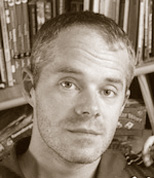
Organizing the Internet of Things Actionable Insight Through OntologiesDate: This event took place live on May 07 2015 Presented by: Boris Adryan Duration: Approximately 60 minutes. Cost: Free Questions? Please send email to Description:Traditional machine-to-machine (M2M) uses the internet to replace what was previously achieved through a wire. The challenges for IT are not much different to any other implementation of a prescribed business model. But how are we going to leverage the connectedness of devices in the consumer Internet of Things (IoT) in a world in which every individual may show a different degree of technology adoption? Not everyone has the connected Crock Pot! The challenges are manifold, and while in 2015 we are still arguing about technical standards that hinder communication of things across platforms, the looming challenges of data integration are even more significant. Even if all devices e.g. in the connected home of the future are going to speak one language, how are we generating actionable insight from the available information according to the users' need? How do we determine the appropriateness of action? An empty fridge might be alarming, but should we inform the user of an impending hunger crisis if the door hasn't been opened in a week, the heating system is set to low, the car is parked at the local airport? Draw your conclusions! Ontologies organize things and establish their relationship to each other. They can be used for knowledge inference. For example, a car is a means of transport and ultimately an indicator of absence or presence. Some scientific domains are already making extensive use of ontologies to deal with vast amounts of information. The Gene Ontology (GO) has over 40k interlinked terms that describe cell and molecular biology. For every biological entity on that scale, we can ask: Where is it? What is its function? What process is it involved with? Benefitting from substantial government funding (in the range of > $40M from the NIH since 2001), knowledge inference through GO is widely applied in academic and industry research. In this webcast I aim to introduce the three main branches localization, function and process that we use in GO and demonstrate how they're immediately applicable in the IoT — after all, a cell is just a large, interconnected system. I will further discuss relationship types that we use in the annotation of biological entities, and propose a few that are more appropriate for the IoT. I will contrast this relatively simple system with other ontologies suggested for the IoT. It is not my aim to sell GO as a one-size-fits-all, but talk about how building a large ontology has taught us pragmatism that is quite remote from many purely academic ontology proposals. About Boris AdryanHaving been part of the great Internet-of-Things community in London and Cambridge, I realized that data analytics and machine learning methods are not yet fully exploited in the context of connected devices. My team and I hope to share our vision of the next generation of "smart", when we start to leverage the vast amounts of sensor data that we're facing with 50 billion connected devices. Twitter: @borisadryan |
|
|
|
